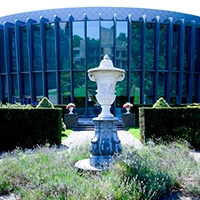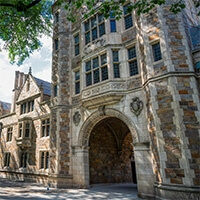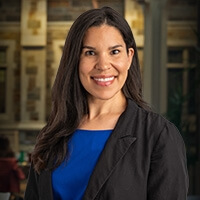Transportation technology can create both new risks and new opportunities to fight the problem of forced labor, according to panelists at the recent Law and Mobility Conference.
Sponsored by the Law and Mobility Program at Michigan Law, the conference’s goal was to consider how emerging technology in the transportation sector affects the systemic issues that leave some individuals at risk of forced labor and human trafficking.
“Access to transportation is access to all other resources,” conference organizer and Law and Mobility Fellow Brittany Eastman noted in her opening remarks.
The conference’s opening session—moderated by Daniel Crane, the Richard W. Pogue Professor of Law—explored issues of forced labor in transportation supply chains.
“Technology is a solution and a problem simultaneously,” said Professor from Practice Luis C.deBaca, ’93, an expert in the fight against modern slavery. He related how this dichotomy has been true throughout history, as developing technology has enabled forced labor but also provided a way out, such as railroads helping people escape slavery. In the present day, automobiles can bring freedom, but some of their components like rubber for gaskets come from forced labor, he noted. C.deBaca also introduced attendees to slaveryfootprint.org, a website that spotlights problems with forced labor in individual users’ everyday lives.
Professor from Practice Chavi Keeney Nana spoke about the use of forced labor to produce lithium-ion batteries. She said that regulation and legislation like the Uyghur Forced Labor Protection Act and Section 307 of the 1930 Tariff Act can help address the problem, but active engagement with companies to ensure comprehensive compliance and with government to increase enforcement is key. One challenge is that companies don’t know what’s in their supply chains, so responsible corporations need to investigate and remediate any issues, she said.
More and more, uncovering such issues and fixing them is an expectation of management and consumers, noted Jennifer Dukarski, a shareholder in Butzel Long’s Ann Arbor office.
She drew on experience in the auto industry to discuss how manufacturers’ demands for information on how materials are sourced flows down the supply chain. Thus, a manufacturer setting clear expectations and obligations—such as in Ford’s Supplier Code of Conduct—can become an effective tool to curtail forced labor. “Appreciating these things under the hood is absolutely critical,” Dukarski said.
Another panel examined how advancements in transportation impact the community at large, including people who can’t or don’t currently use transportation systems—and particularly relating to inequity in transportation infrastructure.
The panelists—Valerie Lefler, executive director of the nonprofit Feonix - Mobility Rising; Frank Douma of the University of Minnesota’s Hubert H. Humphrey School of Public Affairs; and Lev Breydo, visiting assistant professor at Villanova University’s Charles Widger School of Law—agreed that keeping community concerns in mind is critical to building equitable transportation. The focus on nonusers highlighted how to regulate emerging technologies in order to narrow the gap of nonuse.
Lefler said that challenges include child care needs, journeys with multiple legs, and inaccurate or incomplete information on digital maps, particularly in rural areas. “Not everything is a simple commute,” she noted.
Other issues and solutions the panelists identified included:
- Ensuring that placement of transit stops takes into account actual user experience, such as not locating them where snow plows dump loads
- Establishing a call center with a concierge approach to helping seniors—who are sometimes reluctant or unable to use online portals—learn how to use transit systems
- Using technology such as electronic benefits transfer (EBT) cards to help people easily pay for rides on transit systems
- Clearly communicating when new infrastructure is coming and being proactive in hearing and addressing concerns of affected individuals
- Making sure placement of new facilities such as electric vehicle charging stations doesn’t displace existing needs like disabled parking spaces
- Taking steps to ensure new features don’t overwhelm existing infrastructure, such as rideshare stops or scooters blocking pedestrian crosswalks
In each of these approaches, Douma noted, a central question must remain the same: “Who are the members of the community where this is operating, and what’s going to be serving them best?”







